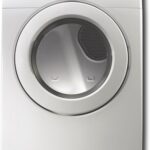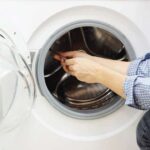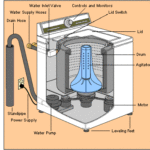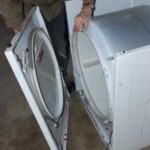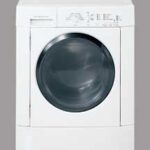This unbiased washing machine buying guide offers expert advice for choosing the best washer your money can buy. Includes choosing the right size, top-load vs. front load, and various options.
Buying a new washing machine is an important long-term investment. A new washer will cost from $350 to $1600 or more—and, if you make a wise choice, will serve your family’s needs for a decade or more.
Through those years, a well-chosen washer will be reliable, energy and water efficient, effective at washing all types of clothes, and will do its job without requiring much attention.
Despite a raft of bells and whistles, all clothes washers are basically big tubs that fill with water, agitate or spin to scrub clothes, spin faster to wring out the water, and then pump away the water.
How they do these jobs—and how much energy and water they use in the process—is another story.
As the expression goes, “the devil is in the details.” Fortunately, organizations like Consumer Reports test various models and recommend the best ones to help us choose wisely. We offer some of their recommendations below. For complete ratings, please go to ConsumerReports.org after you’ve read this article.
It’s important to understand that a handful of companies own and/or manufacture several of the most familiar brands. Whirlpool, for example, makes washers under the Frigidaire, Kenmore, and Maytag brands. Because of this, many of the differences between brands made by the same manufacturer are largely cosmetic. For more about this, see Who Makes What. Even so, some models perform better than others and warranties may differ.
Choose the Right Washer Size & Location
Most home laundry rooms were built to accommodate standard side-by-side 27-inch-wide washers and dryers. But the capacity of washers and dryers has become a big deal, so the machines are getting bigger. Some newer washers (and dryers) are 29 or 30 inches wide for increased capacity.
Before you choose a high-capacity washer, make sure it will fit—both in the space provided and through the doorways it will need to clear to get to the laundry area.
Measure the width, height, and depth of the place where you plan to put your new washer, and measure the doorways (you can always pull the hinge pins to remove a door for added clearance). In the laundry area, figure an extra inch for space between the washer and dryer and at the outer sides of both appliances for air circulation.
Also take into account clearance behind and in front of the machines. You’ll need to allow about 6 inches behind the washer for hoses and hook-ups (and a dryer’s vent). If you’ll be installing a front-loading washer and/or dryer, also allow clearance for access, and opening their doors.
If your home has limited space, consider stacking washer-dryer units. They’re made in full-size or apartment-size capacities. In fact, most front-loading washers are sold with “stacking kits” that allow you to stack a matching dryer on top of them. See more about this below.
If you’re planning to locate the washer near bedrooms or living areas, consider the noise and/or vibrations it will make. Consumer Reports offers vibration and noise ratings.
About Washing Machine Capacity
If you have a large family with lots of laundry, the capacity of your washer is an important consideration. Figure that a 5-cubic-foot washing machine can handle 25 pounds of laundry or more per load. Note: You may not need this much capacity on a regular basis, but it can be handy when you need to wash a king-sized comforter. A 3- to 4-cubic-foot washer will handle a medium-sized load of from 14 to 18 pounds. It’s a good idea to match the washer’s capacity with the dryer’s.
Top-Load or Front-Load?
Perhaps the biggest decision is whether to buy a top-loading or front-loading washer. And, if you decide on a top-loader, you’ll need to choose between a high-efficiency (HE) machine or a more conventional washer with an agitator. High efficiency washers use much less water and energy than a conventional top loader. Most HE machines require a special detergent because they use relatively little water.
Top-loading with Agitators
Top-loading machines with agitators are the classic type. Though they’re by far the least expensive ($350 to $700), they use a lot of water, can be noisy, and can be tough on clothes. They also use more energy for heating water and, because they don’t spin as fast as high-efficiency washing machines, they leave more water in the clothes, thus requiring more energy for drying.
On Amazon, the best reviewed top Speed Queen AWN432S (about $1100 plus shipping). Then again, if you’re going to spend that amount of money, you should check out the high-efficiency machines.
HE Top Loaders
High-efficiency top loaders cost from $600 to $1500. Because they don’t have a big agitator in the middle of the tub, they have more capacity and are not as tough on clothes. Because they spin faster, they extract more water from clothes, saving energy needed for drying. Be aware that this rapid spinning can also tangle clothes.
Consumer Reports’ top four rated top-load washer models for 2017 are (click live links to see at Amazon):
- LG WT5680HVA (about $1080)
- Samsung WA45K7600AW (about $500)
- Samsung WA45K7600AW (about $1200)
- Samsung WA52J8060AW (about $950)
HE Front Loaders
High-efficiency front-loaders perform best but are also the most expensive, from a low of about $700 to as much as $1600. They use from one-third to one-half the amount of water of a top loader with an agitator, and they spin much faster, so clothes need less time in the dryer. Most front loaders are made with stacking kits so you can position a matching dryer on top. On the downside, front loaders can have long-running cycles and vibrate excessively, especially if a load gets unevenly positioned in the drum.
Consumer Reports’ top four rated front-load washer models for 2017 are:
- Maxima MHW8200FW (about $1150)
- Maxima MHW5500FW (about $950)
- Maxima MHW8150EW (about $1350)
- LG WM3370HWA (about $800)
The Washer’s Tub
If you wash clothes often, you will get the best performance from a stainless-steel tub. If you wash less frequently, a porcelain-coated steel or high-grade plastic tub should suffice. Note that some large-capacity high-efficiency top loaders have especially deep tubs—be sure you can reach to the bottom before buying one.
Washing Machine Pedestals
A popular trend for front-loading washers and dryers is the pedestal, a short base that goes under the machine, raising the appliance up to a comfortable height for reaching into the drum.
Most pedestals include one large drawer. Washer and dryer pedestals cost about $300 on Amazon.
Compact Washers
For apartments or small-space laundry rooms, you can buy a 24-inch-wide washer, a small-space stackable washer-dryer combo, or a single washer-dryer appliance. These are all low-capacity options, and they tend to be pricey for what you get. Shop for compact washer/dryers at Amazon.
Options
If you typically wash a variety of fabrics and levels of dirtiness, choose a machine that offers specialty cycles such as “Delicate,” “Extra Soak,” and “Second Rinse.” One popular new option is “Steam,” which offers super hot water for deep cleaning. Some machines can even boost water temperature to sanitize a load.
The latest washing machines automate just about every task involved in cleaning clothes. Multiple water-level settings ensure the most efficient wash for loads of different sizes. Automatic dispensers deliver detergent, softener, and bleach as required by the machine’s various cycles. With a bulk detergent dispenser, you just fill it once for many loads. Models with load sensors deliver only the amount of water required for a particular load. And the water temperature can also be managed automatically.
Electronic displays are great for keeping an eye on the status of your wash. Other items to consider are automatic temperature regulators (a must in cold climates, they ensure that wash water comes in at a constant temperature for the setting) plus additional insulation and reinforced frames, both of which reduce noise.
When buying a new washer, be clear about the warranty’s term and extent of coverage. At minimum, expect the warranty to cover the appliance for one year. Most retailers offer an extended warranty that is worth considering if you buy one of the more expensive, automated appliances. With these appliances, there is much more to go wrong, and computerized parts can cost hundreds of dollars. Sears, for example, offers a service plan and extended 3-year warranty that costs about $200. This includes a once-a-year house call to check out your washer.
More
Other articles at HomeTips cover more helpful information on how a washing machine works and how to install one. You say you don’t need a new washing machine, you just want to fix the old one? Look under Repair & Care to find tips for troubleshooting and solving problems.
How a Washing Machine Works
Though essentially simple devices, washing machines have become more complicated in recent years due to the number and sophistication of settings and controls they incorporate. For an understanding of the basics, see the detailed diagram in How a Washing Machine Works.
Washer Repair & Care
When something goes wrong with a washing machine, it is typically not difficult to diagnose the problem. Whether an average do-it-yourselfer can perform the fix is another story. Because of the number of features that can be found in a modern-day washer, some repairs are best left to a professional. As with all appliances, proper use and maintenance go a long way toward years of trouble-free service. For what to do about specific problems you may encounter, see Washing Machine Repairs.
Washing Machine Installation
Properly installing a washing machine has mostly to do with making the right water supply hookups. You will also need a standard 120-volt electrical outlet to provide power to the machine’s motor. For a step-by-step walk-through of setting up your washer, see How to Install a Washing Machine.
NEXT SEE



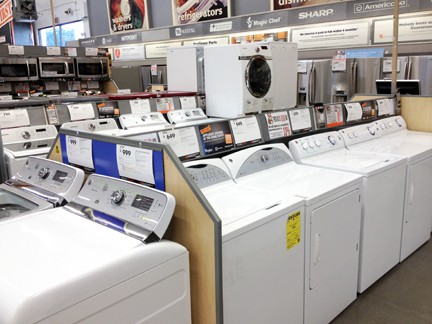
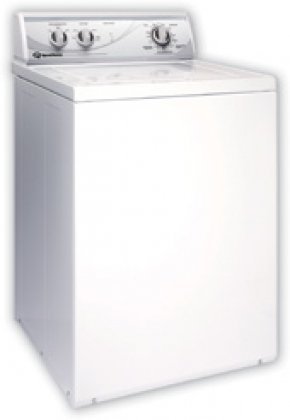
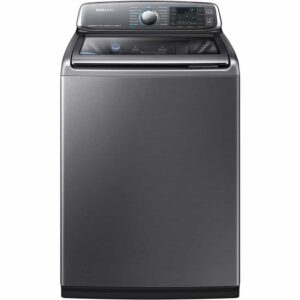
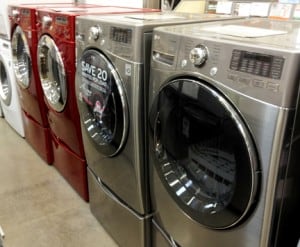
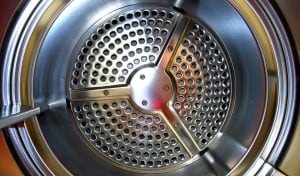
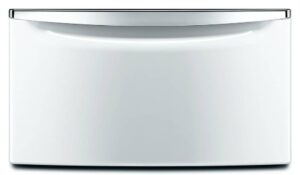
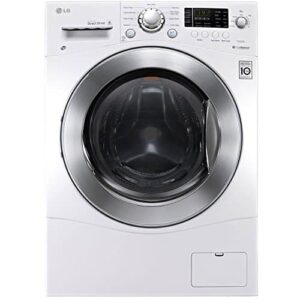

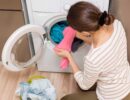
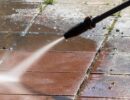
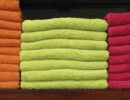
 Don Vandervort writes or edits every article at HomeTips. Don has:
Don Vandervort writes or edits every article at HomeTips. Don has:
